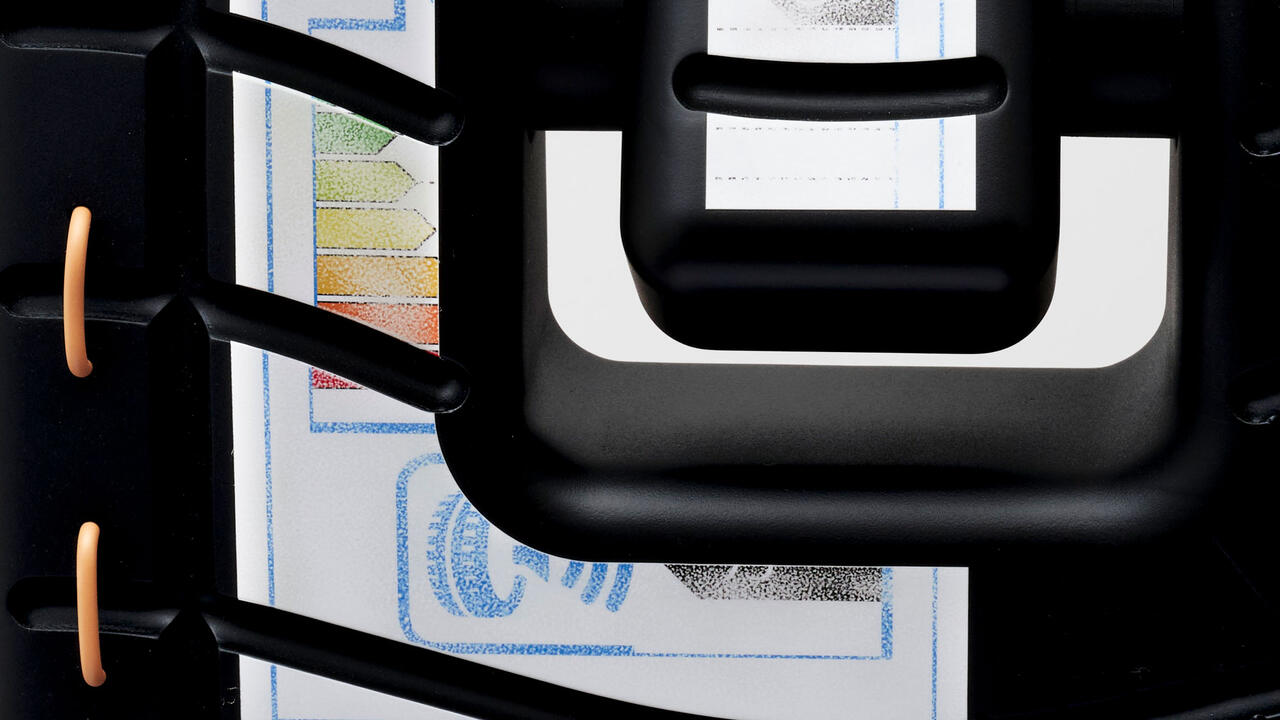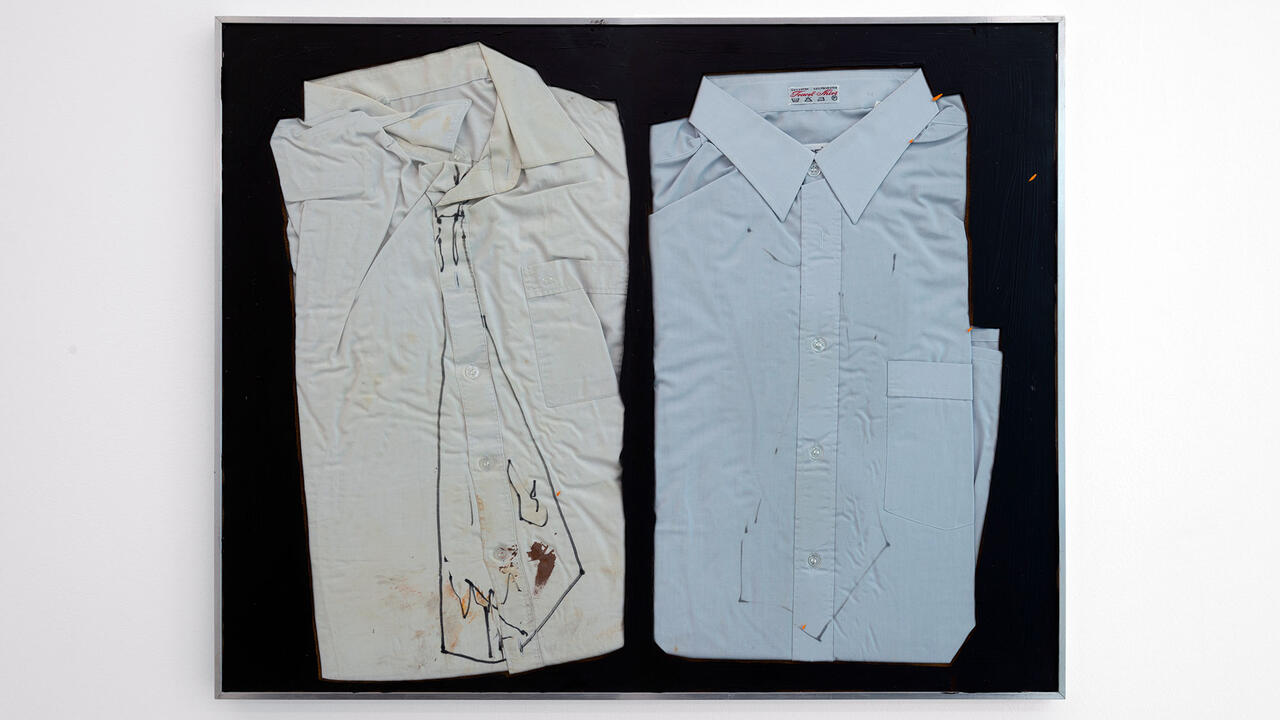Merlin Carpenter

A poster installed at the entrance to Merlin Carpenter’s exhibition at Simon Lee Gallery presented an infamous 1997 photograph of Noel Gallagher (then of the band Oasis) and his partner Meg Matthews at a Tony Blair-hosted party at Number 10 Downing Street. The image exudes a strange mixture of self-conscious celebration, sycophancy, discomfort and archaic celebrity. Headed with the words ‘Tate Café’, it was hung pointedly above a table of various back-issues of this and other art magazines. The stock between my two visits dwindled from a healthy pile in the first week to one or two dog-eared copies by mid-December.
Inside, 18 stark black-on-white paintings of Tate Modern’s non-gallery interiors emblazoned the wall. Apart from wide views of the café, a pile of Joan Miró catalogues are seen in the bookshop and a Guardian-sponsored newspaper stand is loosely rendered, as is a rack of ‘What Do You Think?’ leaflets and a picture of two men engaged in apparently cool, intelligent discussion. All of the canvases are inexpertly stretched, with uneven creases. The blunt, pared-down painterly gestures echo Carpenter’s project ‘The Opening’ (2007–09), a multi-venue series of shows, where various slogans – such as ‘Die Collector Scum’, ‘Simon Lee utter swine’ and ‘Cunts’ – were painted onto pre-hung canvases in front of an audience at the private view of each exhibition. One of these, at Galerie Christian Nagel in 2008, involved the artist arriving in and painting from a white Mercedes.
So why is Tate the subject of this new show? A friend of Carpenter told me that the institution allegedly once hung the artist’s work in its café without consulting him, and that this was a kind of revenge. But what questions does this abject institutional critique pose about the relationships between artists, dealers, museums, collectors and curators? A number of critics – including Matthew Collings and Martin Coomer – have argued that Carpenter’s reproaches are a naive form of juvenile posturing. It might, however, be the case that this specific rebuke is a strategic obfuscation. While the accompanying press release omits any description of this show, instead focusing on Carpenter’s other recent exhibitions, viewers were left to take their own interpretative route, goaded on by the words ‘What Do You Think?’. Perhaps the most pressing issue is that the paintings ruminate on the nature of education and audience development from within the context of a commercial gallery in Mayfair.
If Carpenter’s previous text works, such as those that assert ‘Stop Art’ and ‘Kunst = Capital’, were criticized for their desirable commodity status, then this project points to another intentional contradiction, whereby the artist attempts to reassert control over the institution by making critical (but tasteful) paintings of its interior. One could quite easily imagine them hanging in the spaces they depict. ‘Tate Café’ takes a futile context and pushes painting as entertainment to the nth degree in a situation that combines polar opposites: crass culture versus ‘good’ taste; the fashionable frisson of criticality and market forces; Tate as public organization with power over artists and connected to corporate sponsors with interest.
Carpenter’s feeding of the art world to itself – with questions of performance, spectacle and money – not to mention his poking fun at the value of painting being manipulated by dealers and auction houses, has encouraged readings of his work as a cul-de-sac, a pantomime of protest’s possibility, an endless self-reflection without resolution. If it doesn’t already, Carpenter’s form of ‘ethical exploitation’ could also act as a mirror and a model for Tate, and it would be an intriguing move for the museum to acquire this series, it being part of the artist’s idea that the recuperation and assimilation of critique by institutions is inevitable and expected. In this respect, ‘Tate Café’ would be a useful addition, because of the work’s ability to ask awkward questions whilst sitting squarely within the frame it attacks.














